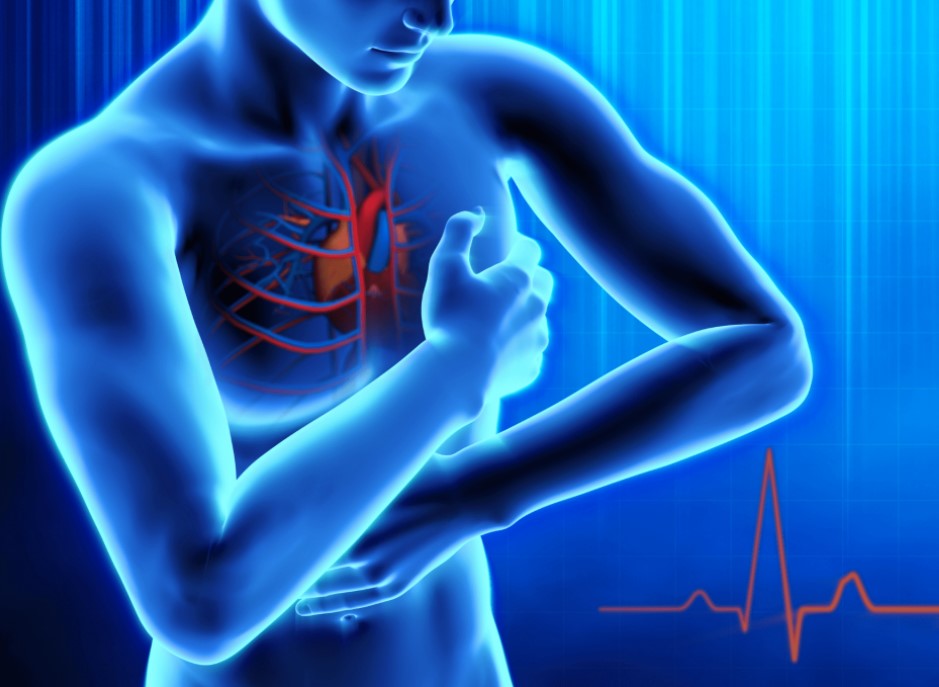
Heart attack: guidelines for recognising symptoms
Generally, the first of the symptoms that are associated with a heart attack is chest pain, but there are other signs that it is important to be able to recognise, as well as the difference with which they manifest themselves in men and women
Acute myocardial infarction has seen a significant reduction in hospitalisations, thanks to the dissemination of information related to prevention, and faster diagnosis and clinical assessment.
Knowing how to recognise the symptoms of a myocardial infarction, both by the patient and by specialists, is indeed crucial to intervene in time and save their lives.
But how do you recognise the symptoms of a heart attack?
In October 2021, the prestigious journal Circulation published new guidelines from the American Heart Association and the American College of Cardiology for the symptoms of myocardial infarction.
Heart attack: what symptoms should not be underestimated?
The guidelines emphasise the importance of properly assessing chest pain.
Its characteristics and association with other symptoms can in fact tell us whether the patient is actually suffering from an infarction, or whether the origin of the discomfort can be traced back to another pathology.
But how to assess the symptomatology associated with chest pain?
To do so, it is necessary to pay attention to all kinds of signs, from the more ‘common’ ones, such as shortness of breath, radiating pain in the arms, shoulders and jugular; to others that are less common, such as nausea.
Moreover, heart attacks can present with different symptoms in men and women.
How to recognise heart attack symptoms in women?
In women, it is very important to pay attention to so-called ‘atypical’ symptoms, as opposed to typical ones, such as chest pain related to breathlessness.
These are pains that are not confined to the centre of the chest, but can also involve the shoulders and back, or cause reduced tolerance to exertion or simple exercise.
Nausea can also lead to the diagnosis of an acute cardiac disorder.
What are the symptoms of a heart attack in men?
In men, the symptoms of an acute heart attack are more ‘typical’ and generally present with an oppressive pain in the centre of the chest lasting more than 10-15 minutes, accompanied by shortness of breath. In such cases, it is necessary to seek help immediately, as only timely treatment can save the patient’s life.
Can timely intervention really save your life?
Yes. This is why Circulation stresses the importance of considering the correlations between chest pain and other pathologies, analysing even less common symptoms that may nevertheless be alarm bells of a possible heart attack.
Today, among adults who visit the emergency room for chest pain, only 5% are not actually affected by an acute coronary syndrome.
The risk of attributing another cause to chest pain associated with other symptomatology is very high and may prevent immediate, life-saving intervention.
Read Also
Emergency Live Even More…Live: Download The New Free App Of Your Newspaper For IOS And Android
Heart Attack, Some Information For Citizens: What Is The Difference With Cardiac Arrest?
Heart Attack Symptoms: What To Do In An Emergency, The Role Of CPR
What Is The Difference Between Pacemaker And Subcutaneous Defibrillator?
What Is An Implantable Defibrillator (ICD)?
What Is A Cardioverter? Implantable Defibrillator Overview
Paediatric Pacemaker: Functions And Peculiarities
Cardiac Arrest: Why Is Airway Management Important During CPR?
RSV (Respiratory Syncytial Virus) Surge Serves As Reminder For Proper Airway Management In Children
Supplemental Oxygen: Cylinders And Ventilation Supports In The USA
Heart Disease: What Is Cardiomyopathy?
Inflammations Of The Heart: Myocarditis, Infective Endocarditis And Pericarditis
Heart Murmurs: What It Is And When To Be Concerned
Broken Heart Syndrome Is On The Rise: We Know Takotsubo Cardiomyopathy
Cardiomyopathies: What They Are And What Are The Treatments
Alcoholic And Arrhythmogenic Right Ventricular Cardiomyopathy
Difference Between Spontaneous, Electrical And Pharmacological Cardioversion
What Is Takotsubo Cardiomyopathy (Broken Heart Syndrome)?
Dilated Cardiomyopathy: What It Is, What Causes It And How It Is Treated
Heart Pacemaker: How Does It Work?
Paediatric Implantable Cardioverter Defibrillator (ICD): What Differences And Peculiarities?


